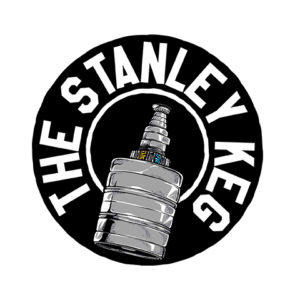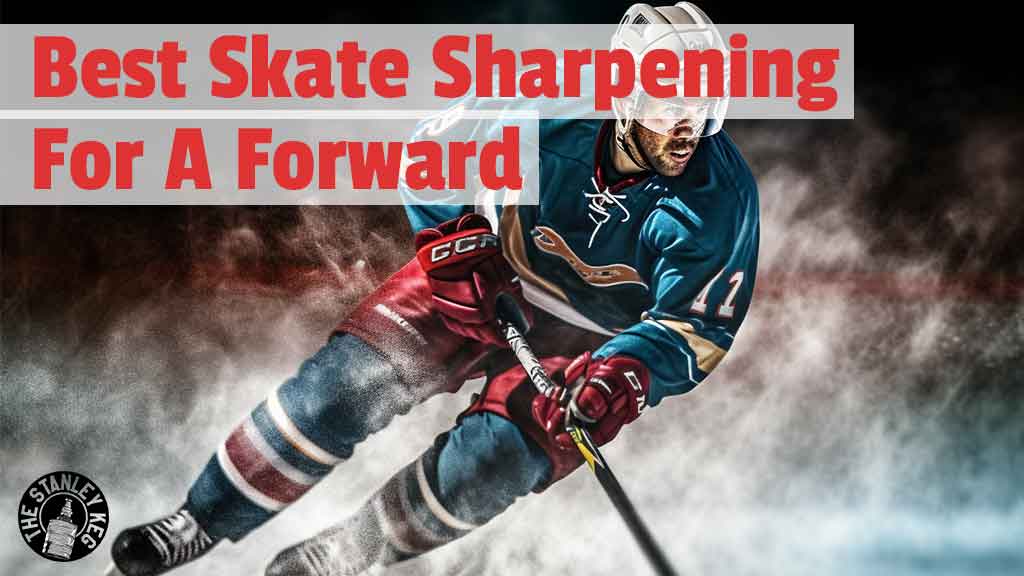
If You are a forward in beer league hockey and you are wanting to have an extra edge to your game (pun intended) you should learn a little bit more about how skate sharpening affects your game play.
As A forward I recommend a 5/8″ hollow skate sharpening and a Quad profile. This combo provides good grip and glide balance. It’s suitable for stability and control on the ice, allowing sharp turns without losing balance but it does not sacrifice much speed.
The numbers above describe the most common factor described when sharpening your skates and that is the “hollow” of your blade. But your hollow is not the only thing that you can tweak in order to really up your game. Keep reading and we will dive into what the hollow of your blades are and what else you can change to feel more comfortable in your skates while on the ice.
What Is A Standard Hockey Skate Sharpening?
If you go to get your skates sharpened and the guy or gal behind the counter says “do you just want the standard?” and you just agree to it because you aren’t sure what that means, then you are probably getting a ½ inch cut on your skates.
What this ½ inch is referring to is how deep the gap is between the two blades on your skate.
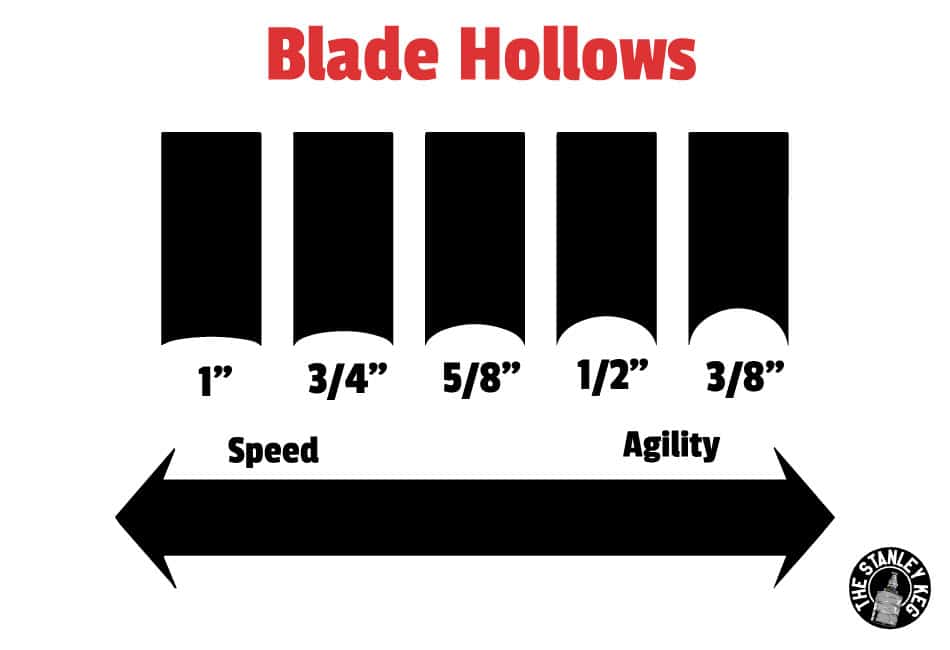
Yes, you actually have two blades that contact the ice per skate, your inside edge and your outside edge. (It’s essential to understand these two edges to become a better skater) This space between the two blades is also called the hollow on your skates.
A ½ cut is the standard because it is a great middle ground between the amount of grip you get on the ice and the amount of glide you generate.
Is a standard ½ cut the best sharpening for a forward in hockey? The answer to this question totally depends on your play style. We will dive in deeper to some of the details that will help you determine what sharpening is best for you and your play style.
Hockey Skate Sharpening Chart With Benefits Of Each
| Sharpening (Hollow) | Benefits |
| 1″ | Really shallow hollow on your skates which maximizes speed |
| 3/4″ | Slightly less shallow with more grip than 1″ but still focused on speed |
| 5/8″ | A good balance between grip and speed. My recommenced Sharpening |
| 1/2″ | This is the standard cut at most shops. Focuses more on grip which will help you learn your edges. |
| 3/8″ | A really deep hollow which sacrifices speed for bite. You will be able to stop hard and turn quick. |
You can get your skates sharpened or as some people say, the hollow adjusted, anywhere from 1” all the way to ⅜”. As the number gets bigger, this means there is less of a rounding, or space between your two blades. This means a 1” sharpening will give you less grip. You will not dig into the ice as much with your skates sharpened like this.
This is beneficial for larger players who do not need help griping the ice. 1” cuts will also allow you to glide much easier on the ice which results in a higher top speed. The cons of a 1” cut are less grip which makes you less agile. It will be harder to take tighter turns and be more difficult to stop quickly.
As you move towards the ⅜ side of the chart you will begin to dig into the ice more. The hollow in between the two blades on your skates becomes deeper. This allows for a better grip on the ice which helps with battles in front of the net because you are able to grab the ice better which makes it harder to push you around.
A deeper hollow also allows you to have better acceleration because you can grab the ice with more force without your blade sliding. You can turn tighter and stop quicker. But when skating in a straight line you will have a lower top speed because your blades will be digging into the ice more causing added resistance.
Hockey Skate Profiling For Your Skating Style
Profiling your blades are different from your standard sharpening. When sharpening your blades, think about looking at your skate straight on from the toe. A sharpening is how deep the half circle is between your two blades.
Profiling your skate blades is adjusting how flat or curved the entire length of the blade is. Think of looking at your skate blade from the side of the skates.
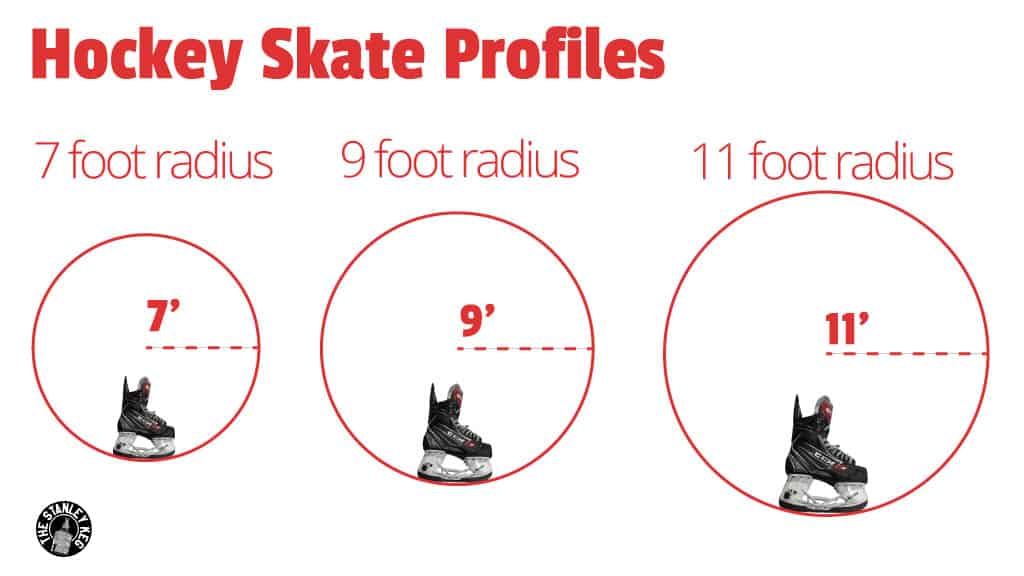
Profiles are typically measured in feet instead of inches. Common profiles of hockey blades in the past have been between 9-11 feet but new technology is quickly changing that.
We will talk about some of the new, great things happening in just a second.
A larger profile (13 feet) means that more of the blade will touch the ice at one time. Larger profiles will highlight top speed. While a smaller profile (9 feet) means less of the blade will touch the ice at one time and this highlights agility.
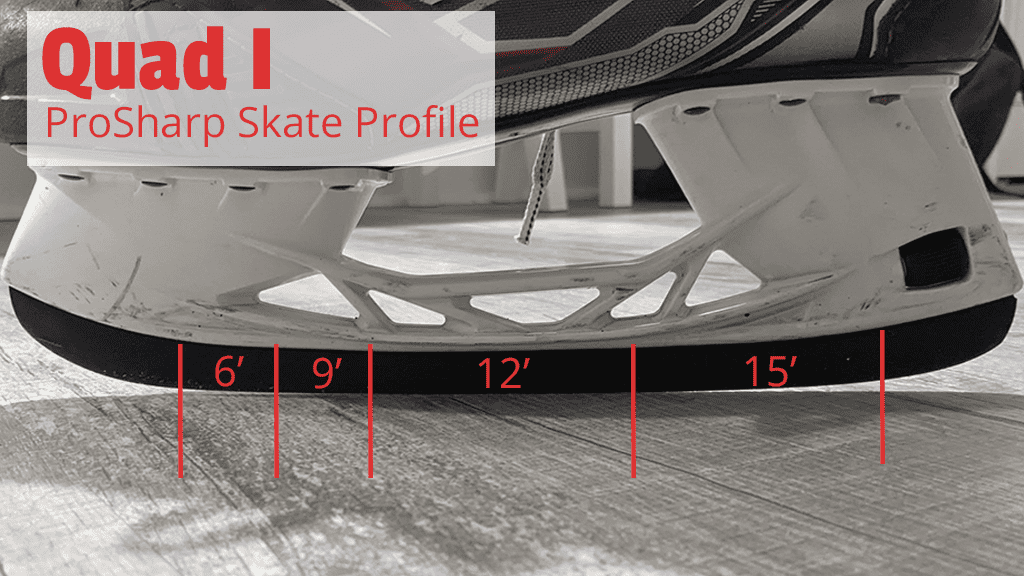
New technology from Bauer and Pro Sharp are now making skate blades that have different profiles along the entire blade. This is a little confusing, but what this means is that at the toe of your skates you can have a steeper profile than at the heel and the middle of your skate can have a slightly different profile than both the front and the back of the blade.
The most complex skate profiling can have four (4) different profiles on a single blade. They call this quad profiling.
Take a look at this quick video and the guys from Bauer will explain it for you very well.
You can look to see if a pro shop near you does skate profiling here on Bauers site or you can always mail your blades in and get them profiled from PSB or Binnie’s.
Typically the multi profile skate sharpenings will have a smaller radius towards the toe to allow for grip and agility when on your toes and a larger radius towards the heel for easier gliding.
Best Hockey Skate Sharpening For A Forward
I believe that the best skate sharpening that a forward in hockey can get is a 7/16 “ sharpening with the Zuperior profile. I believe this because you highlight agility while not sacrificing as much speed as you could if you were to cut more aggressively.
As a forward speed is important but i think that agility is slightly more important. If you are able to make quicker, harder stops and cuts you can be more elusive and deceptive with the puck.
As for profiling your blades for a forward I again think you should highlight agility. Bauers Zuperior profile is designed to enhance speed, agility and grip. This allows you to make quicker turns and grip the ice better while coming out of the turn for powerful acceleration.
The combination of these things will increase your board play where you will be battling for the puck and in the game of hockey puck battles are where the game is won and lost. If you are able to play tighter and quicker against the boards than the opponent you will be able to control the puck more and most likely the game.
The best thing that a hockey forward can do is highlight agility and speed.
How Often Should You Get Your Skates Sharpened?
A good general rule is that you should get your skates sharpened about every 15 hours of skating time. If you play multiple nights a week you will probably need to get your skates sharpened every month or two.
However, some people love to keep their skates super sharp. You might be the type of person that wants your skates sharp all the time and will like to get them sharpened every two weeks.
You will know that you need to get your skates sharpened if you find yourself sliding on the ice more than normal when ging to push off to accelerate or when taking turns. You will generally feel less grip while on the ice. This could lead to falling down more as well.
For more info on knowing when you should sharpen your skates, check out this article.
What Is The Most Common NHL Forward Sharpening?
Lots of NHL players prefer to sharpen their skates on the more shallow side of the scale, patrick kane, and Sydney Crosby both prefer their skates to be sharpened at 9/16”. This maximizes speed but for the average beer league player, this would sacrifice stops and turns.
These guys are so good on their edges though that the more shallow cut of their blades does not hinder their ability to make hard cuts or tight turns.
The team with the most published skate sharpening info is the Pittsburgh penguins. There are plenty of players on this list with ½, ⅝, and ¾ hollows.
When it comes to the most common sharpening in the NHL the range is anywhere from ½ to ¾. But there are always outliers, You will see some guys with their blades cut on the more shallow side because of their skill level and as a beer league player we might wonder how they are able to get such a grip on the ice.
How Should I Sharpen My Hockey Skates?
Sharpening your skates is a personal preference. However, if you have no idea what to ask for when getting your skate sharpened I would recommend getting your skates sharpened with a hollow of 5/8″. A 5/8″ hollow means that the bottom of your skate blade will have a concave shape with a depth of 5/8″.
This hollow is a good balance between grip and glide. It will provide enough bite into the ice to help you accelerate and change direction quickly, but it won’t slow you down too much or make it difficult to glide smoothly.
The 5/8″ hollow is also a good choice for heavier players because it provides more stability and control on the ice. It allows you to dig into the ice and make sharp turns without losing your balance.
So you should keep your body weight in mind. If you are on the lighter side, you may need s “sharper” blade, or a steeper hollow closer to a ½ or ⅜ . If you are a heavier player you will want to go with a more shallow sharpening closer to a ¾.
Ultimately, the choice of hollow can also depend on personal preference and skating style. Some players prefer a shallower hollow for more speed and glide, while others prefer a deeper hollow for more grip and control. I would recommend experimenting with different hollows to find the one that works best for you.
